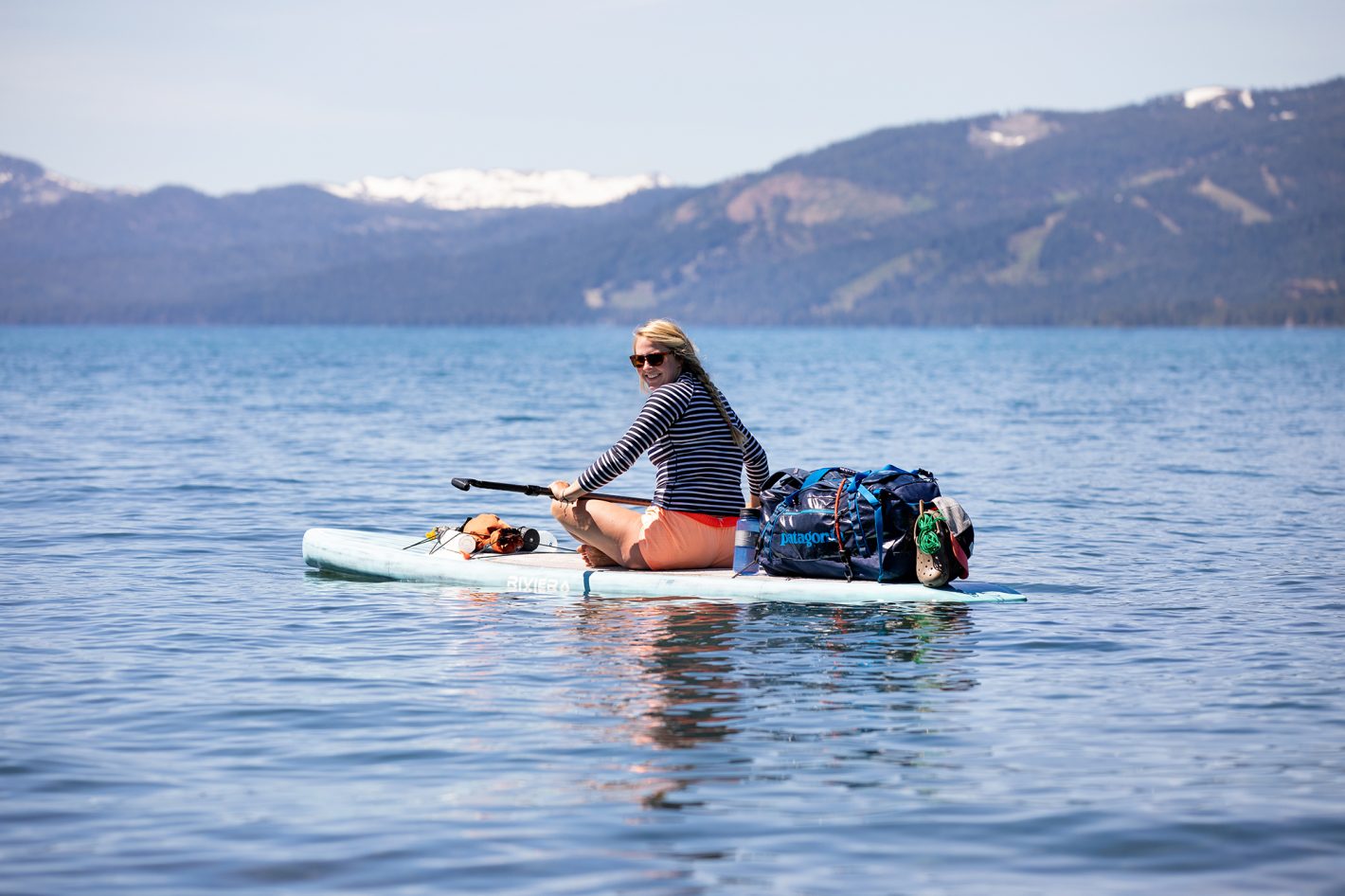 Words and Photos by Ellen Baker
Words and Photos by Ellen Baker
Last summer, I was introduced to a new means of adventure, a trek of sorts that I had never previously thought about. I met my friend Shelby for a drink; time had passed in an instant and all of a sudden we hadn’t seen each other in months. Typical chit-chat took its course as we caught up on who was dating whom, discussed the direction our career paths were seemingly taking and boasted about our most recent outdoor escapades. Shelby is a brilliant biologist who always has a story to tell, and when she asked me if I would be interested in joining her on a paddle expedition, I was all ears. “A backpacking trip on stand up paddle boards. It’s like, ultra light backpacking on water,” she said with subtle enthusiasm. Without hesitation, I immediately agreed to join her the following summer.
Californian heat often brings our outdoor adventures to a water source. We swim, boat, raft, run through sprinklers—whatever it takes to ease the intense rays that we enjoy so much. Paddle camping, as I am going to call it here, combines that need for water with the seclusion of nature and a workout, to boot. There are various types of paddle camping: SUP, kayak, raft; really anything that involves a paddle (to be honest, I came up with the term paddle camping to include all the variants of paddle sports. I don’t believe this phrase legitimately exists … yet!). So grab yourself a paddling vessel and let’s take a look at how to plan a paddle camping trip.
Where to go
Shelby’s vision is to SUP the entire circumference of Lake Tahoe. Our training regimen currently consists of four days at a time—three nights and four days paddling. I recommend starting with a single over-nighter and seeing how you feel. Lake Tahoe is a fantastic place to begin, as there is extensive information already gathered discussing routes to take, places to stay, regulations, etc. Check out Laketahoewatertrail.org for some really great information regarding single or multi-day trips. The campgrounds at Lake Tahoe can be pricey and it is illegal to camp along the shore because it is all privately owned, so if money is a factor, try looking into some more remote lakes that are easily accessible by car (avoiding a long approach to your chosen lake is highly recommended as you will be carrying a sufficient load). Not into lakes? Check out a low-flow river and let me know how it goes!
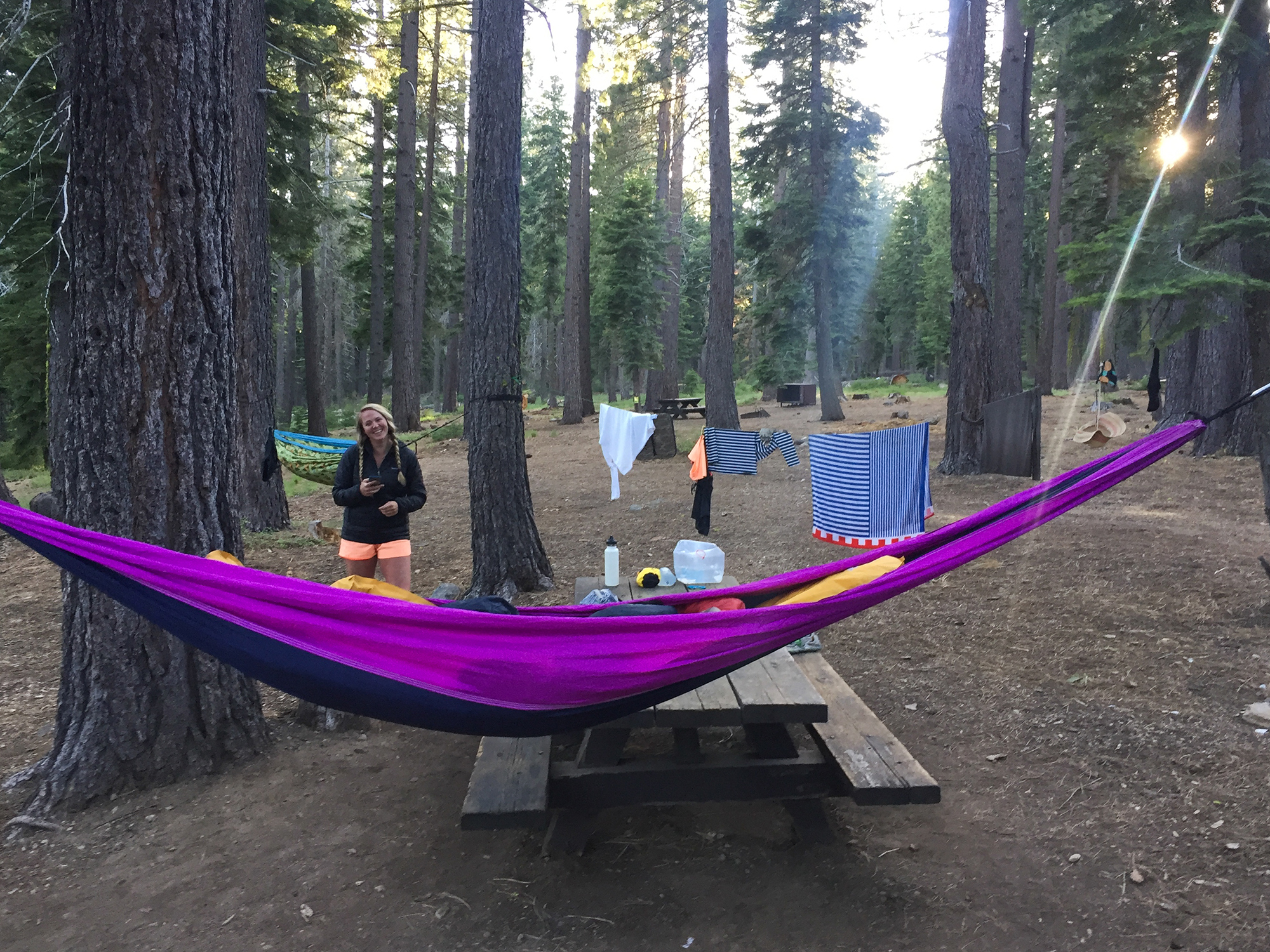
Our third campsite. Drying clothes and setting up hammocks.
Camping
Campsites are the most convenient as there are typically bear boxes, toilets and sometimes trash bins. Check out a public lands map if you prefer wild camping, but be sure to practice the Leave No Trace method and make sure your food won’t attract bears! A short story on bears: On our most recent paddle camping trip, I awoke from a slumber in my hammock as a bear walked by and brushed its body against mine. Luckily, we had our food hung in a tree because bear boxes were not available. Again, bear-proof your food!
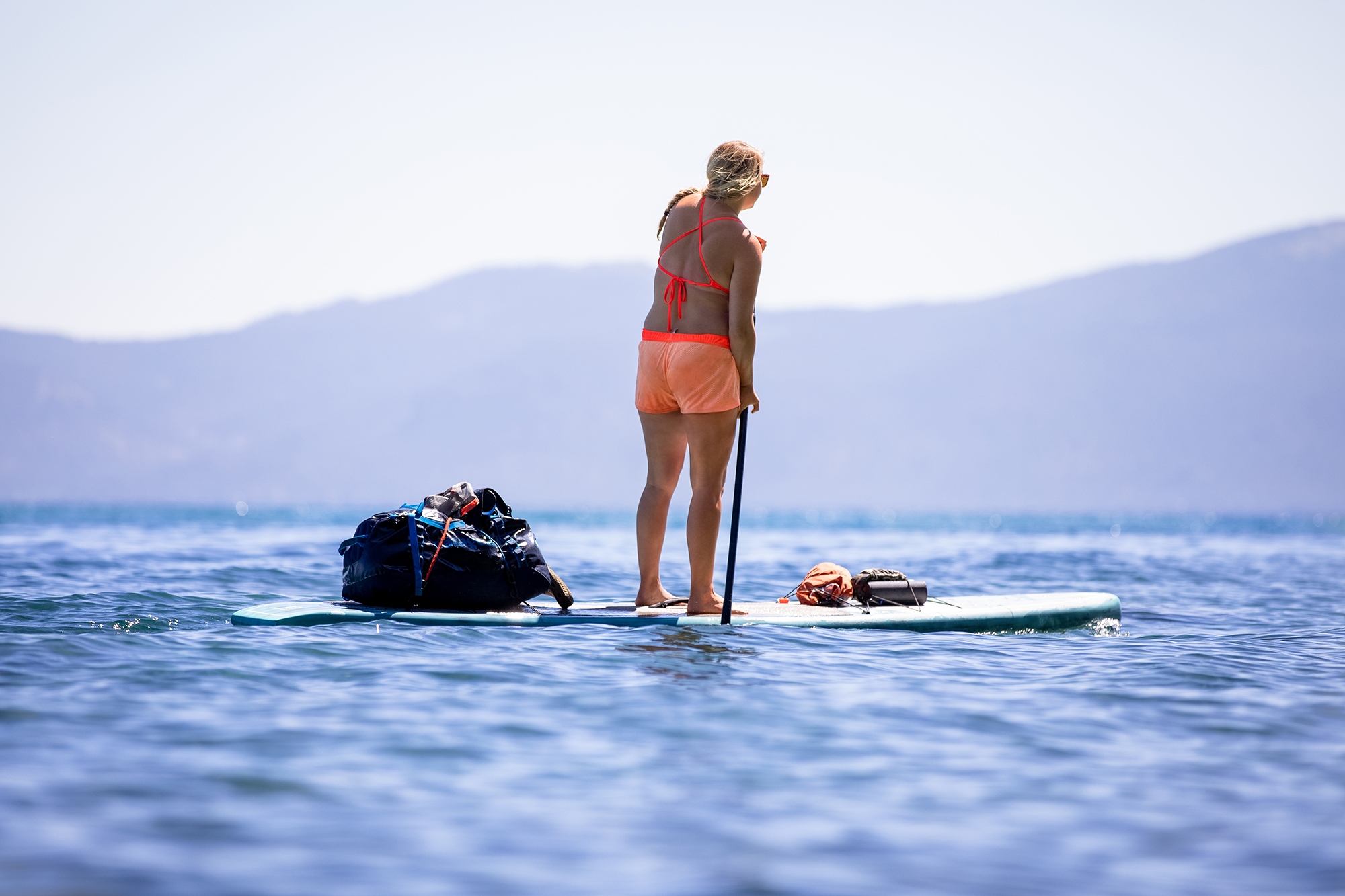
The water of Lake Tahoe starting to become choppy around noon.
What to bring
The less the better. It will be easier to paddle and easier to get in and out of camp with a smaller load. We opted to ditch the tent and bring hammocks to sleep in. In doing so, you better be damn sure the trees are plentiful! We also brought a small tarp and sleeping pads in the case of a lack of trees (sleeping pads are also a game-changer when used in the hammock to keep out the cold air from beneath you). I’m not going to write out a gear list for you, as that would take some of the adventure away, but aside from typical backpacking gear, make sure you have a personal floatation device (PFD), sun protection (this includes head, face, arms, hands, legs and feet), waterproof phone case, multiple dry bags, bug spray, waterproof shoes or sandals, and here’s a shameless promotion of CBD tincture because it saved me when my shoulder injury began to flare up.
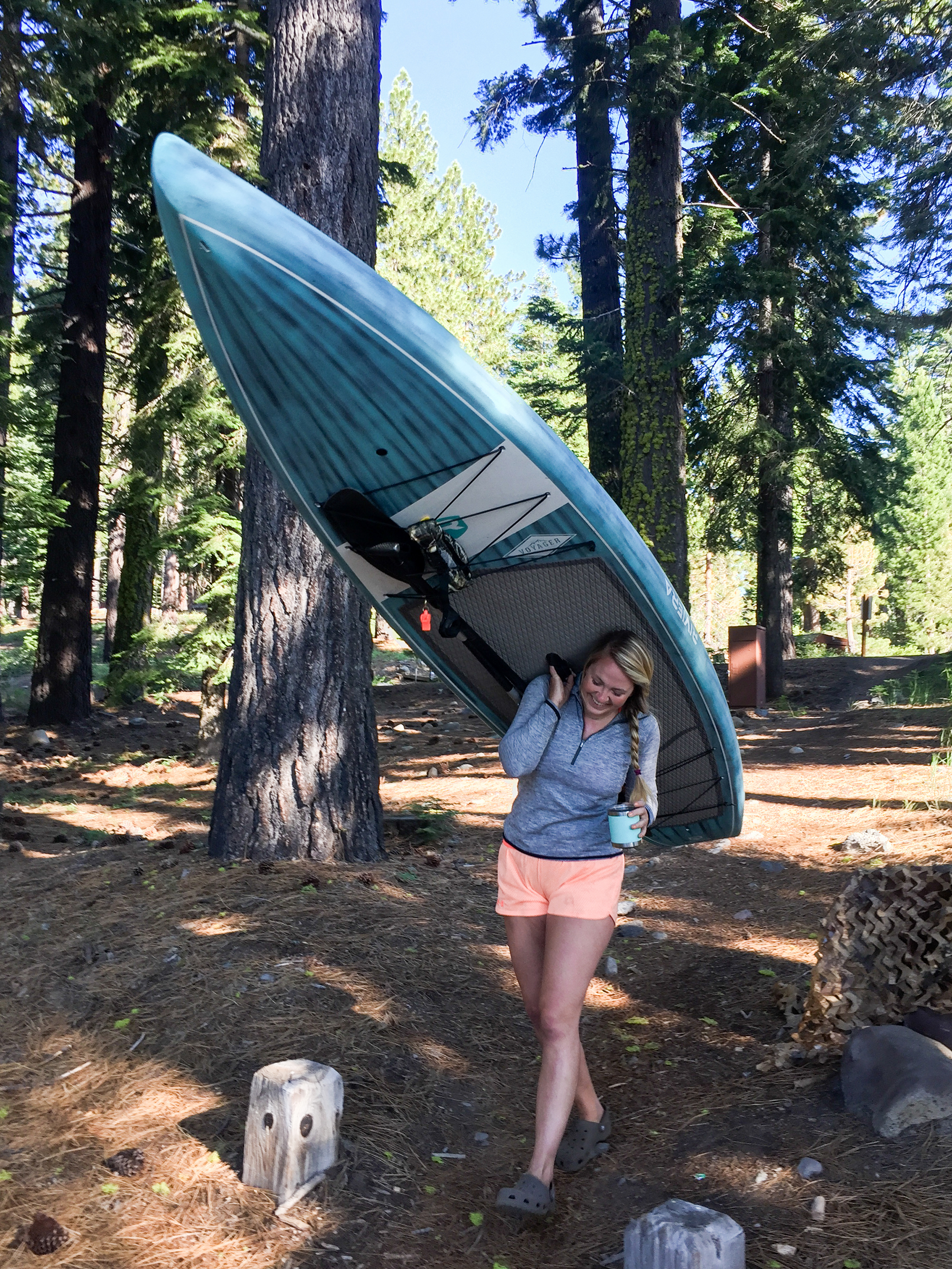
Shelby on her daily haul from campsite to water.
The water
Water is dynamic. Check wind reports, understand the current beneath you, prepare for waves and don’t ever take mother nature too lightly. Although this could be a nice weekend out on the water with a relaxing sleep under the stars, be prepared for something to go awry because it often does. Paddle camping provides an opportunity to explore areas that are often unexplored and raw. Study the land, learn about its origins, watch the creatures that inhabit it and adventure on.
**This piece first appeared in print on page 12 of issue #298 (Aug. 14 – 28, 2019)**

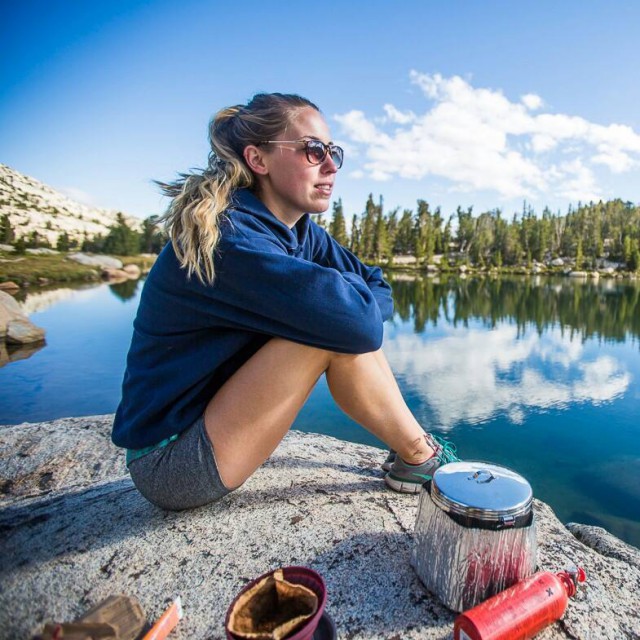
Comments